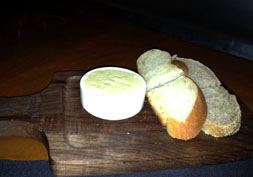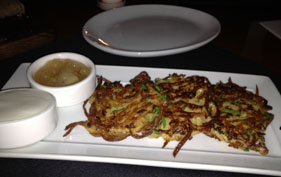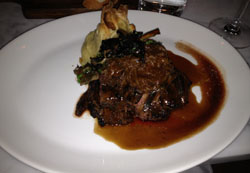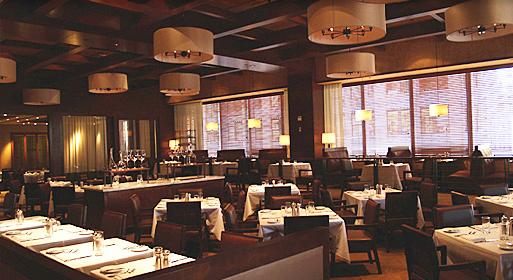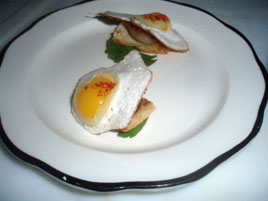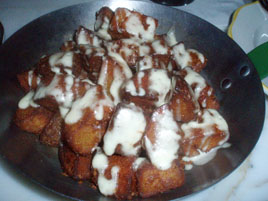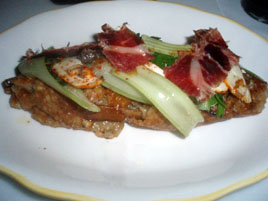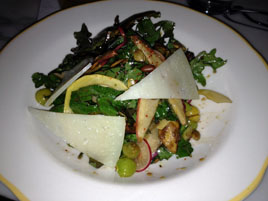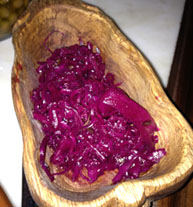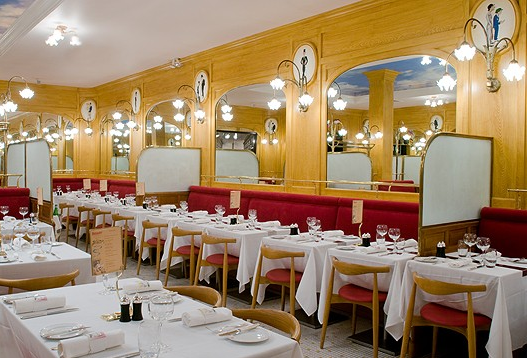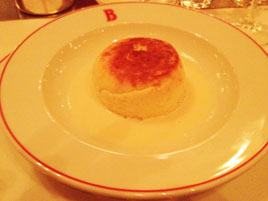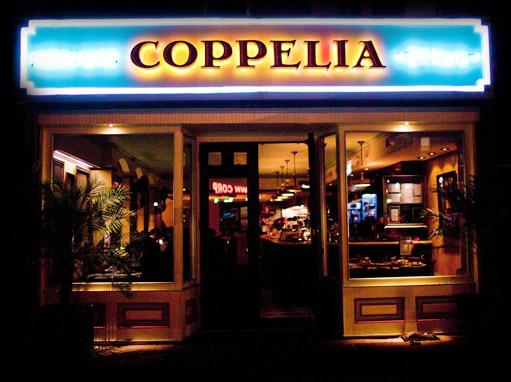La Mar Cebicheria Peruana
 Monday, December 19, 2011 at 05:27PM
Monday, December 19, 2011 at 05:27PM La M.C.P. closed in August 2013 after two years in business. I am not surprised: as discussed in the review below, there were many reasons to be skeptical.
*
 On either the website or the printed menu at La Mar Cebicheria Peruana, the first thing you see is the list of cities where the restaurant is franchised: eight of them to date. In all, chef Gastón Acurio has thirty-three restaurants on three continents, most of them duplicates trading under a handful of names, like Astrid and Gastón, Tanta, and La Mar. He makes Jean-Georges Vongerichten look like a small-time operator.
On either the website or the printed menu at La Mar Cebicheria Peruana, the first thing you see is the list of cities where the restaurant is franchised: eight of them to date. In all, chef Gastón Acurio has thirty-three restaurants on three continents, most of them duplicates trading under a handful of names, like Astrid and Gastón, Tanta, and La Mar. He makes Jean-Georges Vongerichten look like a small-time operator.
I guess Chef Acurio never got the memo: New Yorkers don’t take kindly to imported franchises and chefs. He would have been far wiser to open under a new name, giving at least the impression that he was creating something unique. It could have been a complete sham, but who would know?
Then, there’s the location, the former home to Tabla. Even Danny Meyer didn’t survive here. It’s a large space on two levels, in a high-rent building. Only a well-capitalized operator who was very sure of both himself and his concept would have considered it. But restaurants need to fit the personality of their neighborhoods, and La Mar (named for the sea) feels like a cruise ship past its prime. Does that work at Madison Square Park? Only time will tell.
 Wikipedia proclaims Chef Acurio “a true culinary visionary who has put all his effort into rediscovering Peruvian cuisine.” (Apparently the Wiki Police have not yet gotten around to censoring this clearly biased article.) Besides nearly three dozen restaurants, he hosts a television show in Perú and is author of various cookbooks and magazines. That’s a lot to live up to.
Wikipedia proclaims Chef Acurio “a true culinary visionary who has put all his effort into rediscovering Peruvian cuisine.” (Apparently the Wiki Police have not yet gotten around to censoring this clearly biased article.) Besides nearly three dozen restaurants, he hosts a television show in Perú and is author of various cookbooks and magazines. That’s a lot to live up to.
The menu is in six categories, a layout that blurs the line between appetizers and entrées, and seems calculated to provoke over-ordering. The traditional appetizers are $11–18, the main courses $26–42, which makes La Mar a rather expensive restaurant, especially if you accept the tacit invitation to order from each group.
We did the opposite, eschewing the so-called appetizers and entrées entirely. In the meantime, it’s easy to fill up on fried plantain chips (above left) with their appealing hot dipping sauce.


The Cebiches ($15–28), the so-called national dish of Perú, lead off the menu. There’s much more variety here than the Mexican ceviches commonly seen on New York menus. The “Tigre Tasting” ($15; above left) offered three drinkable shot-glasses: fish, shrimp, and octopus, all fairly spicy. But I liked the “Popular” ($18; above right) better, with salmon, shrimp, ocotpus, and crisp calamari in a tart green sauce.


Tiraditos (raw fish) are Perú’s answer to sashimi, though to me Italian crudi seemed like a more apt analogy. Three kinds are offered (all $18), of which we tried two (above left), the Nikei (Toro tuna with chile pepper, tamarind, and sesame oil) and the Chaifa (wild salmon belly and cilantro in passion fruit).
Carapulcra is a Peruvian dish akin to a potato stew. It was offered as a recited special, with pork belly as a decidedly non-traditional extra ingredient. The dish as presented ($26; above right) didn’t resemble a stew at all. Was it meant to be an appetizer or an entrée? After multiple failed attempts to get an explanation, we decided to take our chances. It was pretty good, but it’s difficult to ruin pork belly.
The wine list features an ample selection of Argentinean, Brazilian, and Chilean wines, along with more familiar fare from Spain and California. The price range is in line with the food, with decent options below $50, though they were out of my first choice.
The space has a bright new design from starchitect Stephanie Goto (Corton, Aldea). I don’t think it’s her best work, but maybe this tired look is what the client wanted. The layout is the same as Tabla, with a bar and lounge on the ground floor and the main dining room up a flight of steps. It was about half full on a Saturday evening; still, we had trouble hearing our server’s recitation of the daily specials.
The food was all at least pleasant and inoffensive, but it is nothing I am dying to have again. Add two glasses of sangria at the bar ($13 each), and a bottle of Malbec at the table ($52), and we were well above $100 a head, and that’s without ordering traditional entrées. Absent more excitement on the plate, I am somewhat skeptical that the restaurant can build a long-term following at these prices, and in such a sterile space.
La Mar Cebicheria Peruana (11 Madison Ave. at 25th St., Gramercy/Flatiron District)
Food: *
Service: *
Ambiance: *
Overall: *




